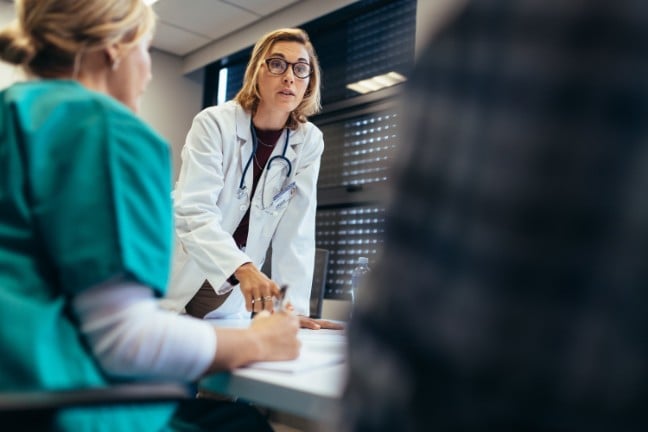By Sameer Sheth, MD, PhD, Professor of Neurosurgery, Cullen Foundation Endowed Chair, Vice-Chair of Research, McNair Scholar, Department of Neurosurgery, Baylor College of Medicine, and Director, Gordon & Mary Cain Laboratories, Texas Children’s Hospital
We live in an exciting time for neurosurgery because our surgical techniques increasingly allow us to do more than save lives. We can also improve them by restoring brain function.
In decades past, neurosurgeons mostly treated urgent and emergent issues, such as brain tumors, aneurysms and spine fractures, and we still treat these conditions today. Now, however, we can also perform quality-of-life surgeries to restore patients to health. With these procedures, we treat disorders of brain circuits rather than anatomical problems that are visible on a scan. With Parkinson’s disease, for example, a patient’s MRI is typically normal, but their life may be extremely difficult. The same is true for depression, anxiety, PTSD, addiction and other disorders.
Physicians don’t often think about referring a patient to a neurosurgeon for depression. We’re getting to the point, however, where that becomes the case because we understand the circuitry underlying psychiatric disorders and can use surgical techniques combined with scientific engineering and neurobiological advances to restore dysfunctional circuitry to health.
As surgical neuromodulation advances, another significant development is unfolding: neurosurgeries are becoming less invasive, which aids patient acceptance. Suppose we can perform an outpatient procedure that’s hardly more invasive than implanting a pacemaker, which has become common. In that case, we’re approaching the point at which these procedures are so minimally invasive they’re acceptable to the vast number of patients who could benefit from them.
Fertile Ground for Neurosurgical Innovation
When it comes to fostering innovation, environment is critical. Seeds grow in fertile ground. As an affiliate of Baylor College of Medicine, Baylor St. Luke’s Medical Center benefits from the outstanding science, research and clinical work of the clinicians at BCM and Texas Medical Center, especially in neurology and psychiatry. These clinical disciplines are critical. As neurosurgeons, we’re trying to restore brain circuits to health, so we need to work closely with the medical doctors who treat conditions of the brain.
Nearby sits one of the country’s foremost engineering programs, at Rice University. Our proximity to crucial clinical disciplines at BCM and TMC, and the engineering and technical expertise of Rice Engineering, is fertile ground for innovation. This myriad of clinical expertise allows us to identify the neurological and psychiatric problems patients face and to access to the technical know-how to devise solutions that are safe, generalizable, scalable and acceptable to the public. It would be difficult to find another center as well positioned for neurosurgical innovation as the Neuroscience Institute at BSLMC.
Pushing Surgical Neuromodulation Forward
Many patients affected by depression, OCD and bipolar disorder have tried medications, behavioral therapy, electrical convulsive therapy and other treatments without success, and are therefore candidates for surgical neuromodulation. At BSLMC and BCM, we have an unmatched ability to treat these refractory, treatment-resistant psychiatric disorders using neuromodulation. Nowhere are these capabilities more apparent than in the clinical trials we’re leading investigating the potential of deep brain stimulation (DBS) to treat certain patients with depression, OCD or bipolar disorder.
One NIH-funded study, led by Dr. Wayne Goodman, D.C. and Irene Ellwood Chair in Psychiatry at BCM, seeks to develop an adaptive DBS system to treat intractable OCD. In addition, I’m leading a study, also funded by the NIH, in which we’re attempting to alleviate treatment-resistant depression by pinpointing certain brain networks that play an important role in mitigating the disease and then targeting them with DBS. Finally, Dr. Goodman and I, along with an engineer, are co-leading a third NIH-backed study involving bipolar depression and DBS that will get underway later this year. All three studies are part of the NIH BRAIN Initiative, which celebrates its 10-year anniversary this year.
I’ve treated patients at many hospitals of varying sizes, including large academic medical centers, but none of them streamlined the process of surgery as well as BSLMC. DBS surgery is highly technical, with no room for error. It calls for a low-risk, high-efficiency approach. The BSLMC OR is a well-oiled machine that allows for efficient, effective and safe DBS surgery.
Much basic and clinical science goes into designing a clinical trial, but it’s in the OR where the rubber meets the road, where we distill the science and turn our great ideas into a safe and effective procedure. That’s what we do in the BSLMC OR.
Endless Possibilities
Everything we think, do and feel—how we interact with the world—stems from the brain. The ability to use surgical techniques to restore it to health is both daunting and exciting. Around the country and world, clinical trials are investigating surgical neuromodulation’s potential to treat Alzheimer’s disease, chronic pain and many other conditions. At BSLMC, we lead the pack in applying surgical neuromodulation therapies to neurological and psychiatric disorders, and the next years and decades will see the fruits of this work.
Currently, far more people are affected by neurological and psychiatric disorders than have access to surgical neuromodulation. To meet that need, we have to make these therapies less risky and more generalizable and scalable. They also need to be cost-effective and socially acceptable. Once we clear those hurdles, I believe there will be no end to the hardship we’ll be able to alleviate with these therapies.




